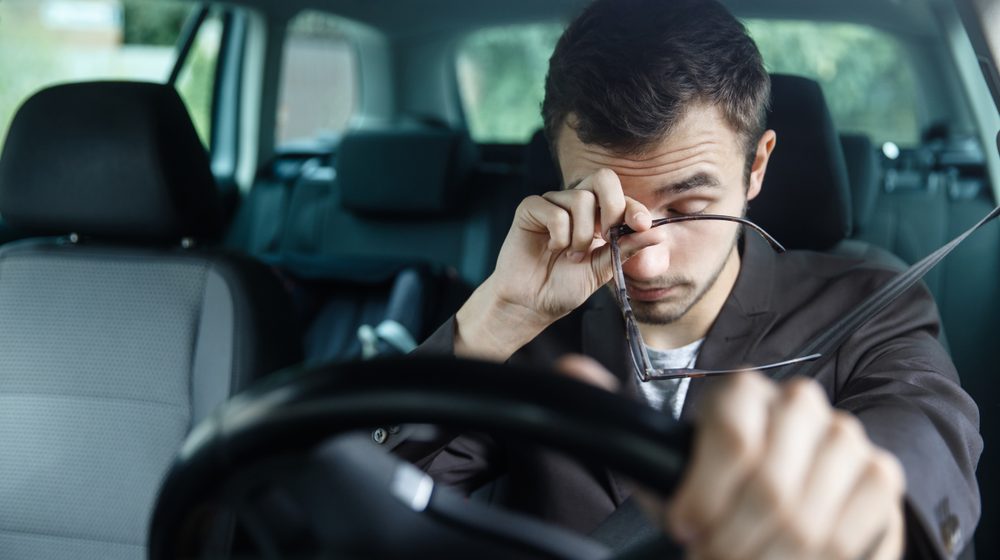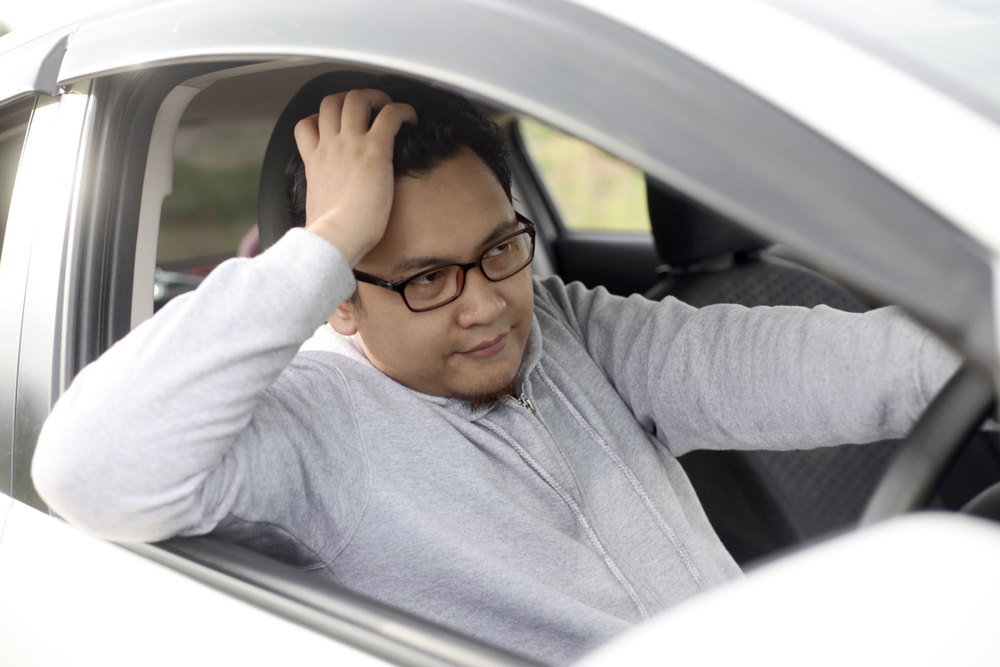
Turns Out you Might not be Guilty of Falling Asleep Dehind the Wheel. Here’s why!

For any driver, the worst thing that can ever happen to them is catching a wink behind the wheel. Heck, it can spell tragedy for the driver and passengers inside, as well as others on the road. Plus let’s not even get started with the expensive medical bills accrued after an accident!
Over the years, sleepiness while driving has been associated with common stress triggers such as abnormally early mornings, working long hours throughout the day, or missing that daily dose of caffeine.

Maxim Artemchuk/Shutterstock
Drowsiness on the road is extremely dangerous, and one of the leading causes of accidents on the road
The Silent Sleep Inducer
However, a recent research study from RMIT University, Australia, is daring to tell an entirely different story.
As a matter of fact, it suggests that there is a silent trigger in the anatomy of a car which induces drowsiness. Turns out that this silent trigger might actually be the vibrations that a car makes when the engine is on!
Interestingly, the study further states that in as little as 15 minutes, sleep can be induced regardless of how active the driver is.
The new study has spiked quite a bit of worry amongst road safety experts as well as car manufacturers, who are looking to intensify the research in order to fully determine whether car seat vibrations actually induce sleep.

airdone/Shutterstock
Drivers who go longer distances are at greater risk, as they are exposed to vibrations and fatigue for longer periods of time
The Science behind it
So this is how it works. As you drive, the gentle car vibrations slowly lull the brain, making you calmer and more prone to dozing off. In turn, the nervous system follows suit by gradually shutting down a few minutes later.
Moreover, the study also claims that the steady vibrations that were experienced by test subjects were similar to those that trucks and cars generate. Indeed, upon carrying out the study, it was observed that these vibrations gradually induced sleepiness, even among those who were healthy and had had sufficient rest.
Virtual Simulator
The main tool of the study was a virtual simulator that was calibrated to vibrate at a myriad of frequencies. Moreover, the volunteers underwent two trials, one where they were exposed to no vibrations while driving virtually, and the other while experiencing low-frequency vibrations of about 4-7 Hz.
Additionally, the researchers also measured the HRV (heart rate variability) of the participants over the course of 60 minutes. The HRV was used to indicate whether the subjects got drowsy by monitoring the reaction of the central nervous system as an individual prepared to sleep.
Affirmative Results
The data obtained by the monitors showed that participants began to feel drowsy after just 15 minutes on the virtual simulator. Moreover, by the 30-minute mark, the drowsiness was recorded to reach significant levels across the board, as participants began to feel sleepier and sleepier until the test came to an end.
So what was happening?
Researchers from the university claim that these vibrations were inadvertently inducing some sort of synchronization within the brain, resulting in sleep. That is why you might find it common to see a whole group of people in a van or bus falling asleep at the same time!
However, there were some notable limitations to the study. For example, the study had only a total of 15 participants.
Furthermore, one particular section of the study, the virtual simulator, proved to be quite monotonous, as participants only drove on a two-lane highway. There were no distractions akin to those of driving in real life, such as other cars and scenery.
That being, you can’t ignore that fact that about one in every five fatal accidents is associated with some sort of tiredness factor. So the study might just be onto something!
More in Mind & Mental
-
`
Here’s Everything You Need to Know About Open Relationships
An open relationship is a consensual arrangement where partners agree to engage in romantic or sexual relationships with other people. Unlike...
June 6, 2024 -
`
Explore the Multifaceted Goals of Meditation
What is the goal of meditation? If you have ever found yourself asking this question, you are not alone. Meditation has...
May 31, 2024 -
`
When is National I Love You Day Celebrated? Mark Your Calendar
Life can get hectic, and sometimes amidst the daily grind, we forget to express our love and appreciation for the phenomenal...
May 23, 2024 -
`
When’s the Best Time of Day to Fish?
For any angler, a successful fishing trip hinges on several factors. But one of the most crucial elements is timing. Knowing...
May 14, 2024 -
`
What Mental Illness Does Britney Spears Have? Discovering the Answer
Britney Spears, a name that resonates with millions around the globe, goes far beyond the glitz and glamour of her stardom....
May 7, 2024 -
`
Here Are Some Easy Ways To Say No To Unrealistic Expectations In Your Relationship
If you are in a relationship, you should constantly work on improving it. Some early lovebirds fall in love too quickly...
May 3, 2024 -
`
Therapy? Medication? What Are the Treatments for PTSD
Post-Traumatic Stress Disorder (PTSD) is a common after-effect of traumatic events. It can be a debilitating condition, but the good news...
April 25, 2024 -
`
Courting vs Dating – Which Relationship Path is Right for You?
In today’s fast-paced world, the terms ‘courting’ and ‘dating’ often swirl around in conversations about relationships. While some people may use...
April 23, 2024 -
`
Essential Mexico Travel Tips for a Seamless Adventure
Mexico, a land of vibrant culture, breathtaking landscapes, and mouthwatering cuisine, beckons travelers from across the globe. But before you embark...
April 16, 2024















You must be logged in to post a comment Login